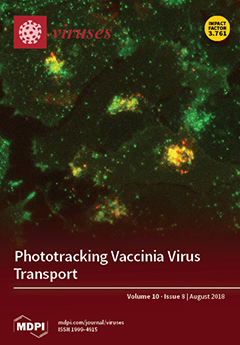The introduction of Zika virus (ZIKV) to the Americas raised concern that the virus would spill back from human transmission, perpetuated by
Aedes aegypti, into a sylvatic cycle maintained in wildlife and forest-living mosquitoes. In the Americas,
Sabethes species are vectors of
[...] Read more.
The introduction of Zika virus (ZIKV) to the Americas raised concern that the virus would spill back from human transmission, perpetuated by
Aedes aegypti, into a sylvatic cycle maintained in wildlife and forest-living mosquitoes. In the Americas,
Sabethes species are vectors of sylvatic yellow fever virus (YFV) and are therefore candidate vectors of a sylvatic ZIKV cycle. To test the potential of
Sabethes cyaneus to transmit ZIKV,
Sa. cyaneus and
Ae. aegypti were fed on A129 mice one or two days post-infection (dpi) with a ZIKV isolate from Mexico.
Sa. cyaneus were sampled at 3, 4, 5, 7, 14, and 21 days post-feeding (dpf) and
Ae. aegypti were sampled at 14 and 21 dpf. ZIKV was quantified in mosquito bodies, legs, and saliva to measure infection, dissemination, and potential transmission, respectively. Of 69
Sa. cyaneus that fed, ZIKV was detected in only one, in all body compartments, at 21 dpf. In contrast, at 14 dpf 100% of 20
Ae. aegypti that fed on mice at 2 dpi were infected and 70% had virus in saliva. These data demonstrate that
Sa. cyaneus is a competent vector for ZIKV, albeit much less competent than
Ae. aegypti.
Full article






